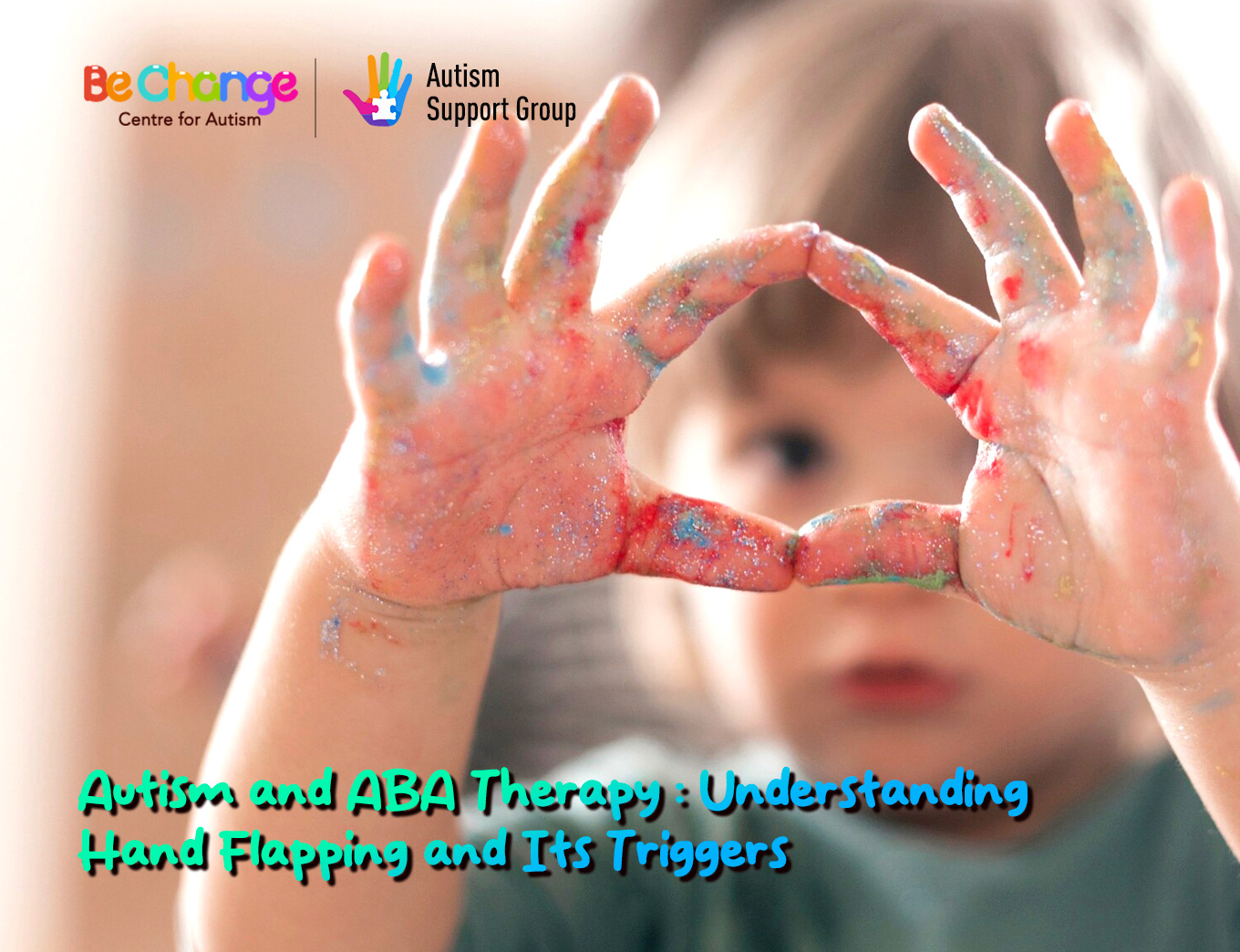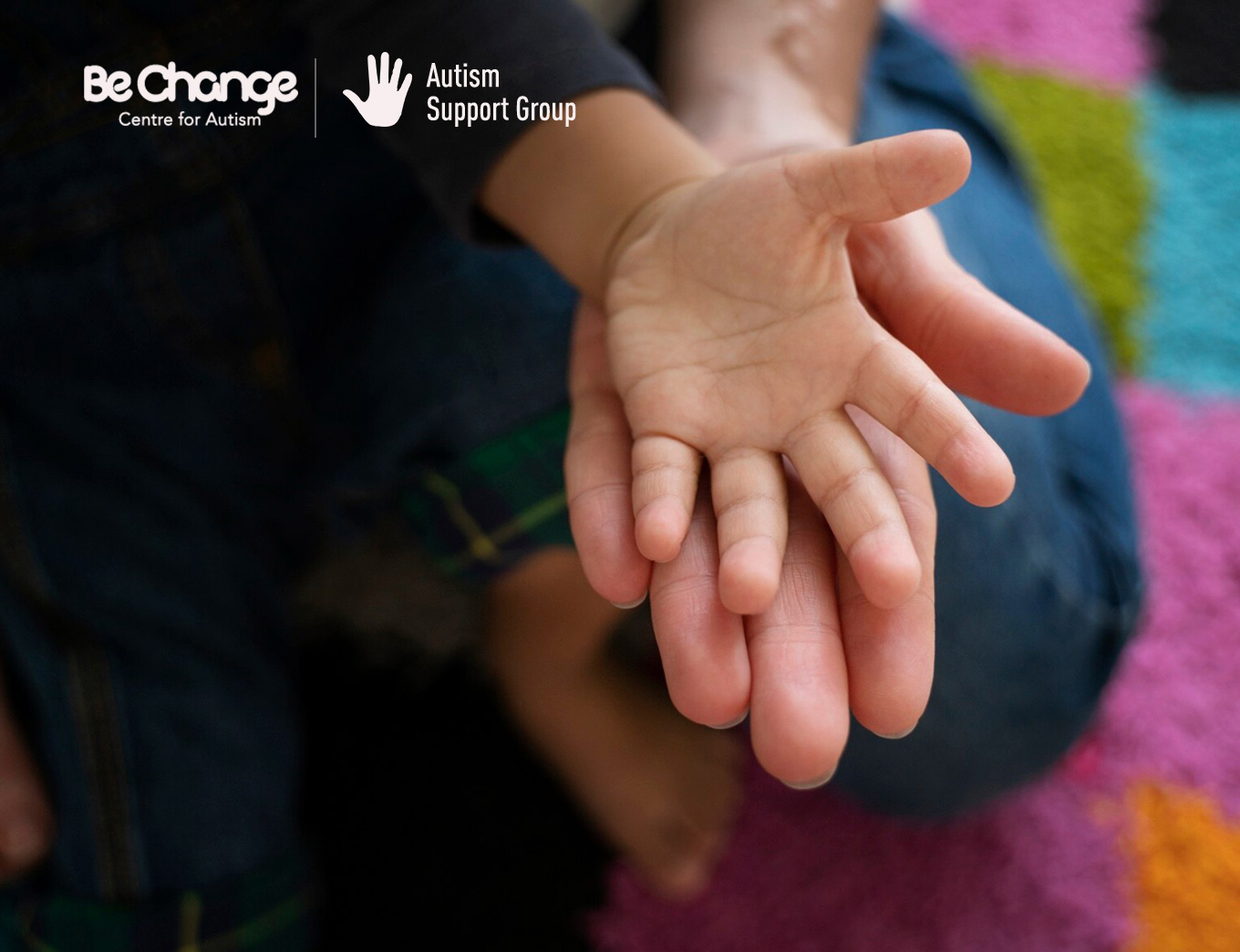Hand flapping is a common form of stimming in children with autism spectrum disorder (ASD). It often involves rapid, repetitive movements of the hands, which can be both visually and socially distracting. While hand flapping is not inherently harmful, it can sometimes interfere with learning, and social interactions, or even lead to self-injury in some cases. For parents, managing hand flapping can be challenging, especially when they want to balance respecting their child’s need for self-regulation with encouraging more socially appropriate behaviors. Applied Behavior Analysis (ABA) therapy can play a crucial role in this.
ABA therapy is a scientifically validated approach focusing on understanding and modifying behavior. It can help reduce or manage hand flapping by teaching children alternative ways to cope with the emotions or sensory needs that trigger this behavior. In this blog post, we will explore how ABA therapy can be used to manage hand flapping in children with autism. We’ll cover the importance of understanding the behavior, how ABA strategies can be applied, and provide practical tips for parents.

Understanding Hand Flapping and Its Triggers
Hand flapping is a form of self-stimulatory behavior, also known as “stimming.” It’s essential to recognize that stimming, including hand flapping, serves a purpose for the child. It may help them manage overwhelming sensory input, express excitement, or cope with anxiety. Before attempting to manage or reduce hand flapping, it’s important to understand what triggers this behavior in your child.
For some children, hand flapping might be a response to sensory overload. Bright lights, loud noises, or even certain textures can overwhelm a child with autism, leading them to engage in stimming behaviors like hand flapping to self-regulate. In other cases, hand flapping might occur when a child is excited, anxious, or even bored.
Understanding the context in which hand flapping occurs is the first step in managing the behavior. By observing your child and noting the situations in which they engage in hand flapping, you can begin to identify patterns and potential triggers. This understanding is critical when applying ABA therapy, as it allows for more targeted and effective interventions.
ABA Therapy and Hand Flapping: How It Works
ABA therapy is based on the principle that behavior is learned and can be modified through the use of reinforcement strategies. When it comes to managing hand flapping, ABA therapy focuses on teaching the child alternative behaviors that serve the same function as hand flapping but are more socially acceptable or less disruptive.
One of the key strategies in ABA therapy is to use positive reinforcement. This involves rewarding the child for engaging in a desired behavior instead of hand flapping. For example, if a child flaps their hands when they’re anxious, an ABA therapist might teach them to use a stress ball or take deep breaths instead. Each time the child chooses the alternative behavior, they might receive praise, a favorite toy, or another form of reinforcement.
Another important component of ABA therapy is teaching self-monitoring skills. As children with autism grow older, they can be taught to recognize when they are about to engage in hand flapping and use a learned alternative behavior instead. This process of self-regulation is critical for long-term success in managing stimming behaviors.
ABA therapy is highly individualized, meaning that the interventions and strategies used will be tailored to the specific needs and triggers of your child. The goal is not to eliminate hand flapping entirely but to provide your child with the tools they need to manage their behavior in a way that enhances their quality of life and social interactions.
Check out our new branch : https://maps.app.goo.gl/SNDxav7fybanc9Qe6

Practical ABA Strategies for Managing Hand Flapping
- Functional Communication Training (FCT)One common ABA strategy for managing hand flapping is Functional Communication Training (FCT). FCT involves teaching the child an appropriate way to communicate their needs or feelings instead of engaging in hand flapping. For instance, if a child flaps their hands when they’re frustrated, FCT might involve teaching them to use a picture card or a simple verbal phrase like “I need help” instead. Over time, the child learns that communicating their needs in this way is more effective and rewarding than hand flapping.
- Differential Reinforcement of Alternative Behaviors (DRA)Differential Reinforcement of Alternative Behaviors (DRA) is another powerful ABA strategy. With DRA, the child is reinforced for engaging in a behavior that is an acceptable alternative to hand flapping. For example, if a child flaps their hands when they’re excited, you might teach them to clap or squeeze a soft toy instead. Whenever the child chooses the alternative behavior, they receive positive reinforcement, which strengthens the likelihood of the behavior occurring again.
- Sensory IntegrationIn some cases, hand flapping is driven by sensory needs. ABA therapy can incorporate sensory integration techniques to help the child meet these needs in a more controlled and less disruptive manner. For instance, if hand flapping occurs due to sensory overload, providing the child with access to a sensory room or sensory-friendly toys can help reduce the need to engage in stimming behaviors. Sensory breaks throughout the day can also be a part of the child’s routine, allowing them to manage sensory input in a structured way.
- Behavioral ContractsAs children get older and can understand more complex concepts, behavioral contracts can be used as part of ABA therapy. A behavioral contract is an agreement between the child and caregiver that outlines specific behaviors the child will work on, such as reducing hand flapping, and the rewards they will receive for meeting their goals. This approach gives the child a sense of ownership over their behavior and can be highly motivating.
Contact us today : https://bechange.in/contacts/

Implementing ABA Therapy at Home
While ABA therapy is often conducted by trained therapists, parents play a crucial role in reinforcing these strategies at home. Consistency is key when it comes to managing hand flapping, and parents can help by applying the same techniques that are used in therapy sessions.
- Create a Supportive EnvironmentYour home environment should be structured in a way that supports the ABA strategies being used. For example, if your child is learning to use a stress ball instead of hand flapping, make sure that stress balls are easily accessible in areas where hand flapping is likely to occur. Additionally, create a calm and predictable home environment to minimize sensory triggers that might lead to hand flapping.
- Use Reinforcement ConsistentlyPositive reinforcement is most effective when it is applied consistently. Be sure to reward your child immediately and consistently each time they engage in an alternative behavior instead of hand flapping. This could be in the form of verbal praise, a small treat, or extra playtime. The key is to make the reinforcement meaningful and immediate so that the child associates the alternative behavior with positive outcomes.
- Monitor and Adjust StrategiesAs your child progresses, it’s important to monitor their behavior and adjust strategies as needed. Hand flapping might decrease or change in response to different situations, and your approach may need to evolve accordingly. Regular communication with your child’s ABA therapist can help ensure that you’re using the most effective strategies at home.
- Encourage Self-RegulationOver time, teaching your child to recognize when they’re about to engage in hand flapping and use a learned alternative behavior can lead to greater independence. Encourage your child to practice self-monitoring by gently prompting them to use alternative behaviors when you notice they’re about to start hand flapping. With practice, your child will become more adept at managing their own behavior.
Conclusion
Hand flapping is a common behavior in children with autism, but it doesn’t have to be a source of stress for parents. Through the use of ABA therapy, you can help your child learn alternative ways to manage the emotions and sensory needs that trigger hand flapping. By understanding the behavior, applying targeted ABA strategies, and creating a supportive home environment, you can help your child develop the skills they need to thrive.
Remember, the goal is not to eliminate hand flapping but to empower your child with the tools they need to self-regulate and navigate their world more effectively.
Remember that every child develops at their own pace, and some variability is normal. However, if you have concerns about your child’s development, early intervention from BeChange Center for Autism, Bangalore can be instrumental in providing the necessary support. Open communication with your child’s ABA therapist is the first step in the process of understanding and addressing developmental concerns. There are many resources available to support parents of children with ASD. With the right support, your child can thrive and reach their full potential.
Join Autism Support Facebook Group : https://www.facebook.com/groups/SupportAutism
